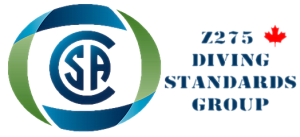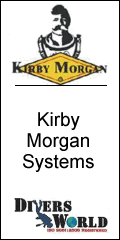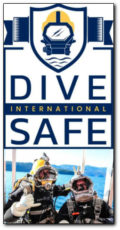CSA DIVE STANDARDS – THE HISTORY AND THE IMPORTANCE TO CANADA’s DIVING INDUSTRY.
By CADC Admin ~ June 15th, 2017. Filed under: Safety, Standards and Regulations.
 (CADC MAG SUMMER 2017 )
(CADC MAG SUMMER 2017 )
With the advent of the 70’s, commercial diving in Canada was going through a period of transition from the heavyweight deep-sea type of diving dress to the use of SCUBA and new lightweight surface-supplied diving equipment.
During this period, there was a significant increase in the numbers of diving related injuries and fatalities.
A large group of representatives from the diving industry, from coast to coast to coast, agreed that action was needed to develop safer underwater working standards for the commercial diving industry in Canada.
In 1971 stakeholders including government regulatory authorities, DCIEM (Defence and Civil Institute of Environmental Medicine), employers, workers and labour groups met in Toronto to discuss an approach to address the growing concern for the need of an robust diving standard within the industry.
The early work began on the development of the CSA Z275.1 Hyperbaric Facilities standard followed in 1972 by the CSA Z275.2 Occupational Safety Code for Diving Operations (CSA Z275.2). The first two, of what would become six standards in the CSA Z275 family of standards, were published in 1974.
In 1992, the Canadian Association of Administrators of Labour Legislation (CAALL) was interested in the harmonization of Occupational Health & Safety regulations in Canada. At the time, each province and territory had their own unique set of OSH regulations. This meant there was 13 sets of OHS regulations to control workplace activities in Canada. CAALL wanted to reduce this duplication of effort and concentrate the limited technical resources available to develop better regulations and make it easier for the increasingly mobile work force to comply with a single national set of regulations. In the spring of 1992, an Inter-governmental Working Group (IWG) was established to act as a steering committee for the National Harmonization Project.
In 1994, an new edition of CSA Z275.2 was released to the regulatory authorities prompting several 0SH jurisdictions to review their own diving regulation. Because of this interest, CAALL determined that this would be a good regulatory template to include in a study for harmonization of regulations. In the spring of 1994 two pilot projects where identified: diving and confined spaces.
In the fall of 1994, a working group for the study of diving regulations was established, pulling together representatives from government, labour and employer groups. Their task was to develop a set of common requirements that could be used by groups in each jurisdiction responsible for the drafting of regulations.
By 1997 the first edition of the CSA Z275.4 Competency Standard for Diving Operations (CSA Z275.4) was published and the working group had completed their work on the proposed common requirements. Unfortunately, among the provinces, there were still numerous issues regarding enforcement that weren’t resolved.
By this time, CSA was in negotiations with the National Energy Board (NEB) to take over the responsibilities for operational and diver competency standards in use at the time in the Canadian offshore industry. CSA concluded that they could write a standard that pertained to the competence for all divers and not just the ones working offshore. This was the genesis for CSA 275.4 and, because the NEB was looking to shed themselves of this responsibility, they helped fund the development of the new standard.
Subsequently in 2003, the Diver Certification Board of Canada (DCBC) was established to fill the gap of diver certification, another responsibility shed by the NEB. Today most professional divers in Canada are certified by the DCBC to the CSA Z275.4.
CSA has been developing consensus standards for occupational diving for 45 years. These standards have been adopted voluntarily by the diving sector across Canada and are recognized and used internationally. They have been widely adopted in provincial and territorial OHS regulations by reference to a section or sub-sections of a particular standard(s) in their regulation. Several provinces simply state that CSA Z275.2 and/or CSA Z275.4 are adopted and constituted as part of the diving regulation. One jurisdiction makes a softer reference to the CSA standards in a code of practice that provides practical guidance to help comply with the law.
One of the reasons why CSA develops national standards is to encourage recognition of a common set of competency and safety requirements across the Country. The establishment of national standards also supports the recognition of the Canadian standards among international organizations – equipment suppliers, service providers, employers, and other governments. For these reasons, our Technical Committee encourages the recognition of the current editions of these industry consensus standards in all jurisdictions.
CSA applauds organizations such as CADC who have called upon their membership to bring their operations into compliance with the CSA Z275.2 and have made available a self-audit tool that will assist them in their efforts to comply.
CSA has and will continue to work diligently with the industry groups, government, regulators and divers to advance the development of the CSA Z275 family of standards to ensure the safety of all diving personnel and others involved in diving activities.
(by Ian Rodd – Ian is the chairman of the CSA Diving Standards Technical Committee for the Z275 Series of Dive Standards. For further information on the standards, contact CSA Dive Standards Project Manager Dave Shanahan <dave.shanahan@csagroup.org>)






